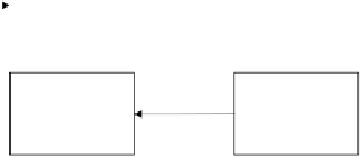Game Development Reference
In-Depth Information
information eliminates any background noise or artifacts, thus reinforcing the
robustness of the proposed approach.
Gesture Classification Using HMMs
Figure 22 shows the architecture of the gesture classification subsystem. Head
and hand segmentation and tracking have been described in previous sections,
while the remaining blocks of this architecture are described in the following
paragraphs.
Figure 22. A general framework for gesture classification through HMMs.
The HMM classifier
In Table 2 we present the utilized features that feed (as sequences of vectors)
the HMM classifier, as well as the output classes of the HMM classifier.
Table 2: a) Features (inputs to HMM) and b) Gesture classes (outputs of
HMM).
X
lh
- X
rh
, X
f
-X
rh
, X
f
-X
lh,
Y
lh
- Y
rh,
Y
f
-Y
rh,
Y
f
-Y
lh
where C
f
=(X
f
, Y
f
) are the coordinates of the head centroid,
Features
C
rh
=(X
rh
, Y
rh
) and C
lh
=(X
lh
, Y
lh
) are the coordinates of the right
and left hand centroids respectively
hand clapping - high frequency, hand clapping - low frequency
lift of the hand - low speed, lift of the hand - high speed
hands over the head - gesture, hands over the head - posture
italianate gestures
Gesture
Classes
























Search WWH ::

Custom Search